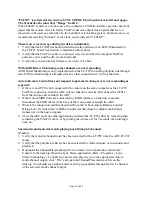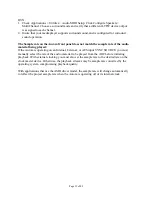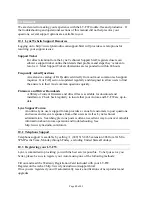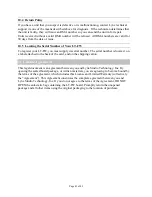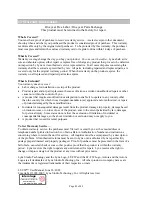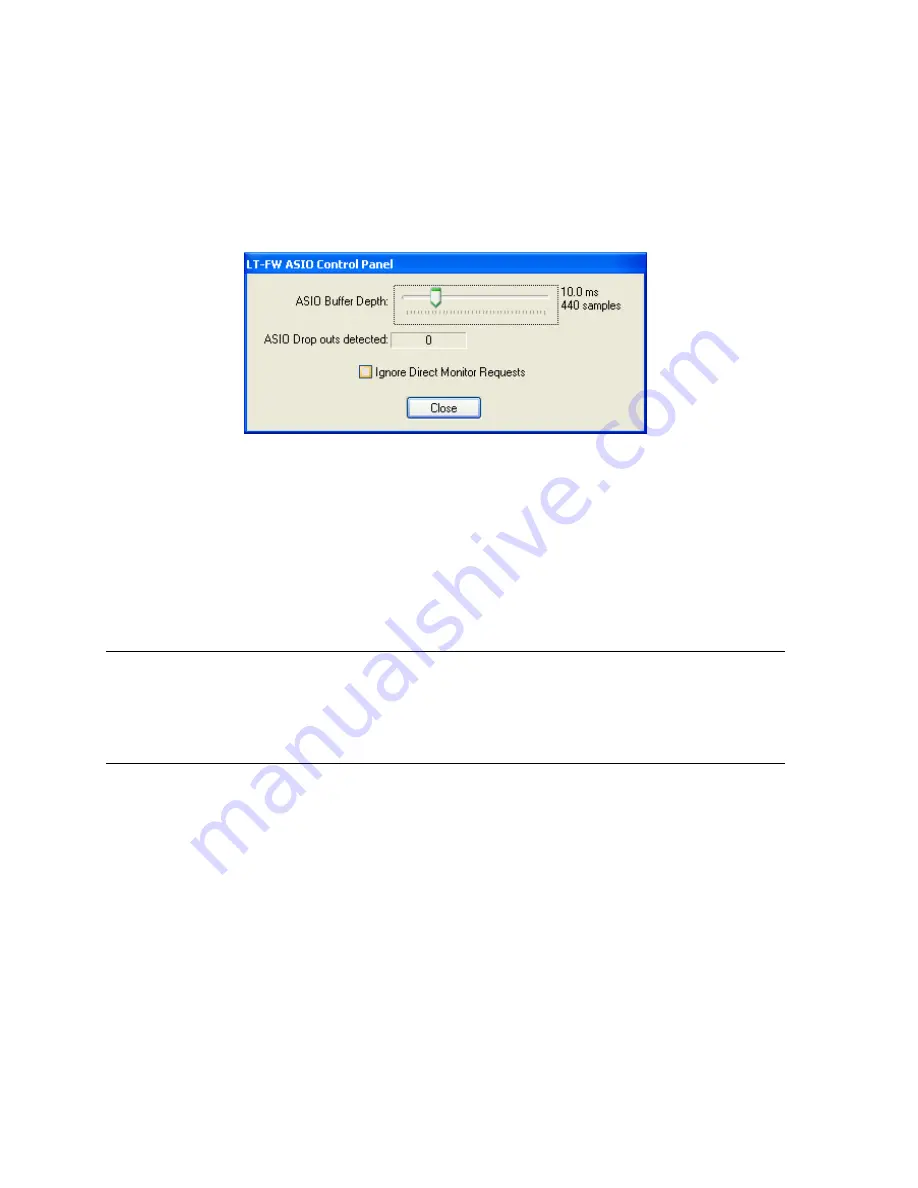
When using an ASIO compatible program, the appropriate ASIO device must be selected
from a settings or options menu in the application. The correct choice would be “ASIO Lynx
Aurora”.
Many ASIO applications provide access to an ASIO Control Panel for the device being used.
For an LTFW equipped Aurora, this button will launch the LT-FW ASIO Control Panel
From this panel, the ASIO Buffer size can be established conveniently within the audio
software application, and dropped samples are reported. Unlike the buffer controls in the
Aurora Remote Control Application, the stream buffer size cannot be set independently from
the ASIO buffer size. The stream buffer is set to 1ms no matter what the ASIO buffer is set
to.
For information about the Ignore Direct Monitor Requests Switch, see Section 8.2.5.2,
Disabling Direct Monitoring.
8.2.2 Macintosh OS X
The Aurora will operate as a Core Audio device under OS X. Core Audio is the dominant
audio driver model for OS X, and is used for media playback applications as well as Pro
Audio applications.
8.2.2.1 Controlling Latency by Changing the Buffer Size
Latency in an audio interface can be defined as the time required to process a sample
requested from an application to the interface’s audio output. A number of factors determine
the achievable latency performance of an Aurora/LT-FW system: processor speed, operating
system, sample rate, number of utilized record or play channels, system efficiency, etc.
Latency can be manipulated by changing the size of the buffers used to transfer data to and
from the LT-FW. Core Audio buffer size controls are offered within most pro audio
recording applications. With the LT-FW buffer sizes between 32 samples and 16384 samples
are available.
Smaller buffer sizes will give you lower latency. However, if a buffer size is too small for the
system or context, audio anomalies such as clicks and pops may occur. It is recommended to
become familiar with altering the LT-FW buffer size to best suit the context of use.
Page 33 of 42




















